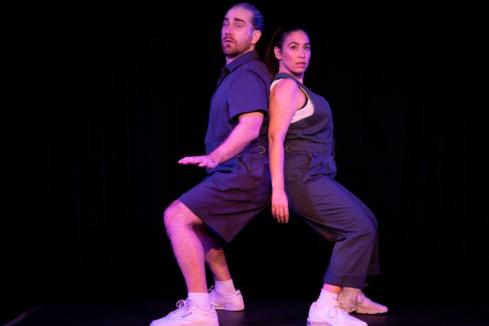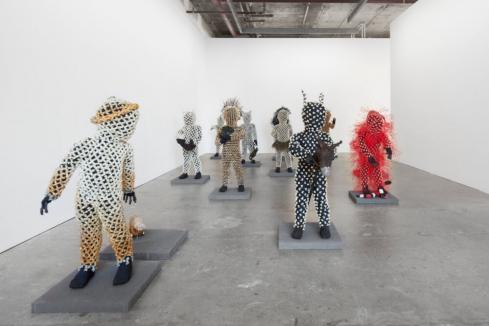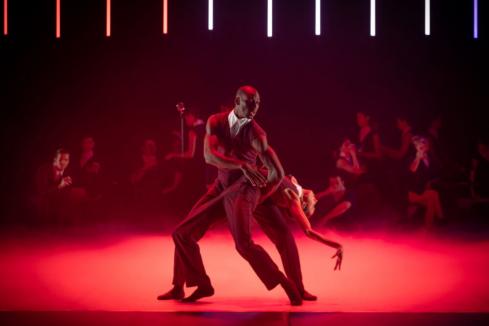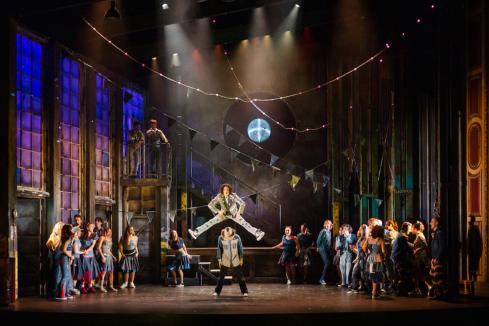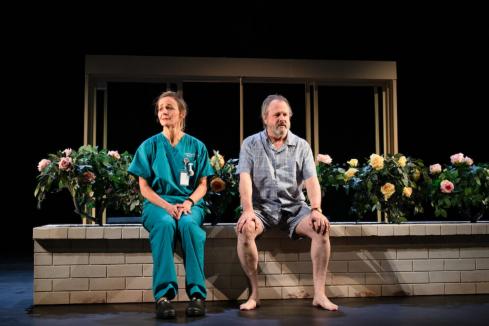The place of human beings in the ecosystem hierarchy is questioned in two clever exhibitions at Goolugatup/Heathcote Gallery, and Craig McKeough is intrigued.

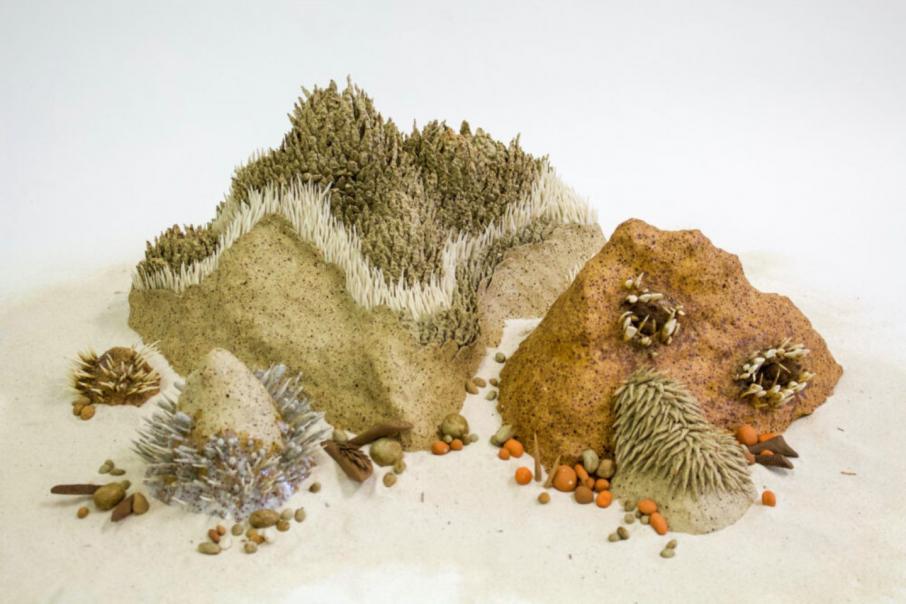
‘Defence/Defiance’, Holly O’Meehan; ‘Habitation and Decay’, Ben Crappsley · Goolugatup/Heathcote Gallery ·
We often think of the human impact on Western Australia’s unique and fragile natural environment as a continuing process of destruction. The colonist mentality has been to conquer the land and turn it to our own advantage; whether for urban development, agriculture or mineral extraction, it seems nature must bow to our will.
Artist Holly O’Meehan suggests an alternative narrative in her exhibition “Defence/Defiance” at Goolugatup/Heathcote Gallery. The exhibition title points to a state of hope, where nature is not simply a passive player waiting to be plundered. Rather it is a resilient system that can adapt to changing circumstances, survive and even thrive.
This quietly beautiful collection of small works, crafted from the unlikely combination of clay, found natural materials and crocheted yarn, demonstrates a diverse range of ways natural forms might defend themselves.
O’Meehan is inspired by the landscapes of the Great Southern region where she grew up, and this is memorably evoked in some of the dramatic mini-landscapes she has conjured from different clays and found materials. She cleverly teams these with her deftly crocheted forms to mimic and soften the textures and forms that make up her landscapes and objects.
The inclusion of found objects such as stones and shells, and sand and soil of various colours adds to the landscape effect.
These are laid out on tables through the middle of the Main Gallery and to move around them is akin to following a drone flight over a fantasy world.
In fact, the arrangement mimics the topography of Koi Kyenunu-ruff (the Stirling Range), the dominant geological feature of O’Meehan’s home territory.
Among it we see examples of the landscape’s defiance. Human incursion has dramatically and irreversibly changed the natural systems of the Great Southern region as big areas of bush give way to farmland. But the use of ceramic spikes, thorns and armour, and masses of hair suggest an array of defence mechanisms – a means of the landscape evolving to hold its own amid human interference.
Elsewhere, O’Meehan changes scale and examines some of the region’s unique wildlife in macro form. These include found sticks suspended on the walls, providing the perfect base for pupating creatures and spiky quills in ceramics, and fungi-inspired ruffles of crocheted yarn. Intricately formed porcelain pieces suggest a variety of organisms, whether marine life or rare flora, but seen at this enlarged scale, each displays a strength that defies their seemingly vulnerable state.
Ben Crappsley also examines human interaction with other species in his exhibition “Habitation and Decay”, and reminds us that the world truly belongs to the cockroach.
We are all familiar with the story – that this reviled insect is the most resilient creature on Earth, and that if anything can survive a nuclear holocaust the cockroach will be it.
Crappsley takes that notion a step further in his mixed media pieces that make up this small series. Here we see digitally altered photographs depicting roaches conquering the human world – looming over city skylines, resident in our seats of power and even looking down on us from space, hinting at the alien-like nature of the most ubiquitous creatures in our domestic settings.
It’s an entertaining, if slightly unsettling look at how humans fit in the natural order of things and our precarious hold on global order.
Seesaw Magazine publishes reviews, news and features about the WA arts scene.





